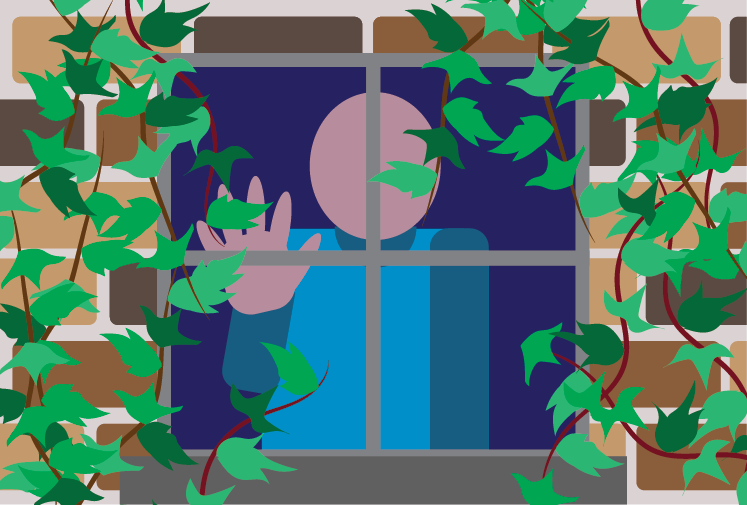
Besides news about the negative effects of COVID-19, there have been social media posts claiming that the environment has improved tremendously due to lack of human traffic in major cities around the world.
A photoset went viral on March 30, and it showed clear canals in Venice with fish and other animals swimming in the water. The Venice mayor’s office said that the change is “not due to improved water quality”, but lack of sediment displacement because of fewer boats on the water, according to CNN.
Many people have attributed it to the halt in Italy’s tourism industry due to the county’s battle with coronavirus.
But is there a similar trend for Atlanta’s environment?
Mayor Keisha Lance Bottoms declared a State of Emergency in Atlanta, which prohibited gatherings of over 50 people or more and shut down dining in at bars and restaurants on March 15. She also increased social distance guidelines.
Governor Brian Kemp also set forth limitations and guidelines which caused traffic to and from the downtown area to decrease drastically.
According to The Atlanta Journal-Constitution, vehicle volume on interstates across the state dropped by 44% from the same day as last year, and non-interstate roads also say 45% less traffic than the previous year.
So, does less traffic improve the air quality?
On Airnow.gov, Atlanta residents can track the air quality in their neighborhoods. It measures this by using the Air Quality Index (AQI).
AQI is the EPA’s index for reporting on air quality. The value goes from 0 to 500, the highest being the most hazardous. An AQI of 50 or below means that the air quality is healthy. An AQI over 300 represents hazardous air quality.
The five major air pollutants that are measured in AQI are ground-level ozone, particle pollution, carbon monoxide, sulfur dioxide and nitrogen dioxide.
Before Mayor Bottoms’ declaration and guidelines on March 15, the daily AQI for Ozone was 31, according to AirNow.gov The next day, the AQI was 25. The air quality has consistently been under 50 since the guidelines were set in place.
But according to 11Alive, the decrease in pollution could also be related to the frequent rain Atlanta has been experiencing this spring.
When it rains frequently, ground-level ozone cannot build-up, which allows for better air quality. In order for high ground-level ozone to develop there needs to be dry weather, warm temperatures and light winds. In order for there to be a clear connection between air quality and less pollution, we will have to wait until the summer, “when the weather is conducive to the development of pollution,” according to the article.
The water quality in Atlanta’s major river has improved as well.
The Chattahoochee River’s National Recreation Area has been closed due to coronavirus concerns.
The South Atlantic Water Science Center determines whether the Chattahoochee water is safe through sampling total coliform and E. coli bacteria. Low risk E.coli levels are less than 235 and high-risk levels are above 235, according to the center’s website.
According to data collected by the center, the E.coli levels in the Chattahoochee River are good, currently at 47. Right before Mayor Bottoms’ declaration, the E.coli levels in the Chattahoochee near Medlock Bridge Road were recorded at 2,755. On March 12, they dropped to 959 and have been decreasing ever since. However, there have consistently been more days of unsafe water quality from January to March than compared to the same time last year.
Although these benefits are short-term, pollution levels could rebound once people have gone back to work.
According to The New York Times, Jill Baumgartner, associate professor and epidemiologist at McGill University, said that the reports of lower pollution levels, particularly air pollution, shouldn’t really be seen as a silver lining.
“It’s not a sustainable way to reduce air pollution, and the long-term economic and well-being impacts of this crisis are going to be devastating for many people,” Baumgartner said.
The continuation of low pollution levels in the air may also help with halting the spread of the disease.
Although there may be a correlation between the stay-at-home order and the decrease in water and air pollution in Atlanta, a recent study done by the Department of Biostatistics at Harvard University shows that long-term exposure to air pollution contributes to more coronavirus deaths.
The study found that only a small increase in PM 2.5 is associated with a 15% increase in the COVID-19 death rate.
According to the EPA, PM 2.5 is an air pollutant that is inhalable and is also the main cause of haze.
So, they suggest that if a city like Manhattan were to lower the PM 2.5 pollutant in the air by a single unit, they could expect to see 248 fewer COVID-19 deaths among a total of 1905 deaths up to April 4.
Solid pollution and trash will continue to be handled under Mayor Bottoms’ guidelines, according to the City of Atlanta Department of Public Works website.
The City of Atlanta’s Solid Waste Department will continue to operate as usual, including curbside pickup and street sweeps as long as residents bag their trash correctly. However, all neighborhood cleanups are cancelled until further notice, alongside all recycling community events.
Regardless of social media posts presenting drastic changes in the environment, real or not, the data shows that sheltered Atlanta residents positively impact the environment.
